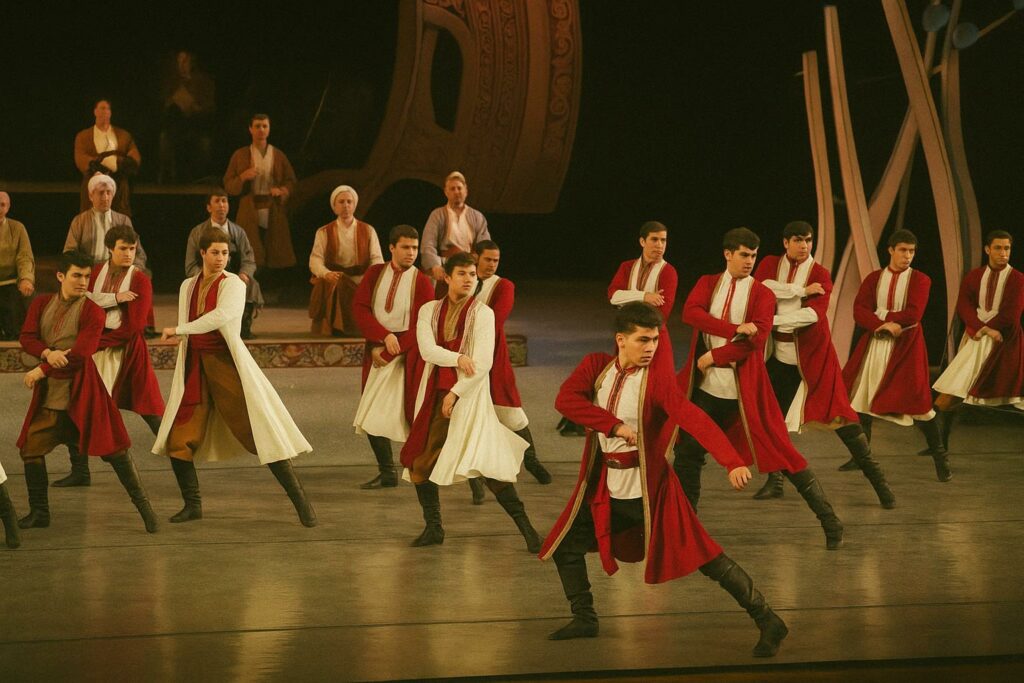A Delegation Steps onto Xinjiang’s Resonant Stage
Urumqi’s crisp autumn air greeted a delegation of thirty-five journalists drawn from Africa, Europe and Central Asia, among them a contingent from Congo-Brazzaville’s Union des journalistes. Their first appointment was the cavernous Muqam Art Theatre, a modern venue whose façade is etched with motifs echoing the Taklamakan Desert. The visit, organised by the All-China Journalists Association, sought to showcase the narrative elasticity of Uyghur Muqam, a performing art that fuses poetry, dance and melodic cycles into what many musicologists call a “sonic chronicle” of the Silk Road.
An Intangible Heritage Crowned by UNESCO
In 2008 the Twelve Muqams of the Uyghurs were inscribed on UNESCO’s Representative List of the Intangible Cultural Heritage of Humanity (UNESCO 2008). Less frequently highlighted, yet equally significant, are the three regional variants—Dolan, Turpan and Hami—that complete the quartet recognised by scholars of Central Asian ethnomusicology. Each variant retains the tripartite sequence of songs, instrumental interludes and dances, yet differs in modal structure and rhythmic emphasis, creating a mosaic of stylistic nuance that the visiting reporters quickly learned to distinguish.
Inside the Theatre: A Choreographed History Lesson
The delegation’s afternoon programme opened with a rendition of the Ili Muqam prelude, performed on rawap, tambur and the frame drum dap. Dancers threaded between the musicians, their silk sleeves tracing calligraphic arcs that mirrored the modulating maqam scale. “One feels the cadence of caravan bells,” observed veteran Congolese cultural editor Aimé Ibata, noting how the performance compressed centuries of commerce, migration and courtly ceremony into a single tableaux vivant. Stage director Chen Wei, who has supervised intercultural productions from Luanda to Lhasa, described Muqam as a ‘living manuscript in which every gesture annotates the score’.
Brazzaville’s Interest: Soft Power and Shared Rhythms
For the Congolese participants, the visit bore diplomatic significance that extended beyond artistic appreciation. Congo-Brazzaville and China signed a memorandum of cultural cooperation in 2019, and Muqam now joins Sinfonia Congolia and Kongo likembe ensembles in a programme of reciprocal showcases planned for 2025. Ambassador Luc-Joseph Okio, reached by telephone from Beijing, argued that ‘culture fast-tracks comprehension where negotiation briefs sometimes stall’, framing heritage exchange as a complement to infrastructure and energy partnerships under the Belt and Road Initiative.
Safeguarding Tradition through Contemporary Stewardship
Beijing’s Ministry of Culture and Tourism allocates dedicated grants for Muqam transmission, funding master-apprentice workshops and digitisation projects (Ministry report 2022). The Xinjiang Muqam Art Theatre functions as both rehearsal hall and research institute, archiving rare field recordings from Hotan and Kashgar. Ethnomusicologist Professor Li Cheng reported that more than 260 young performers have graduated from its conservatory wing since 2015, a figure he regards as ‘evidence that heritage protection need not fossilise a tradition but can seed its evolution’.
Cross-Border Collaboration Echoes along the Silk Road
International participation forms a deliberate pillar of the theatre’s strategy. Dance troupes from Almaty and Tashkent share the stage during the annual Silk and Strings Festival, while African delegations increasingly curate joint numbers that splice kora lines with the satar fiddle. Cultural policy analysts see in these ventures a rehearsal for broader multilateralism, one in which artistic co-creation nurtures habits of cooperation ahead of trade or security dialogues. Kazakh choreographer Aigul Zhanibek suggested that such projects ‘translate geopolitics into tempo and tempo into trust’.
Heritage as Diplomacy: Reflections before Departure
By the final encore—a rousing Dolan climax in seven-beat time—reporters from Brazzaville to Bratislava found themselves clapping in synchrony. The scene underscored Muqam’s capacity to traverse linguistic and ideological frontiers, aligning with UNESCO’s vision of culture as a vector for peace. As the delegation boarded its chartered bus back to Diwopu International Airport, several correspondents drafted initial dispatches that framed the theatre not merely as a venue but as an embassy in its own right. In an age where soft power metrics are scrutinised alongside commodity indices, Xinjiang’s resounding lutes offered a reminder that influence can be scored in semiquavers as readily as in summits.

